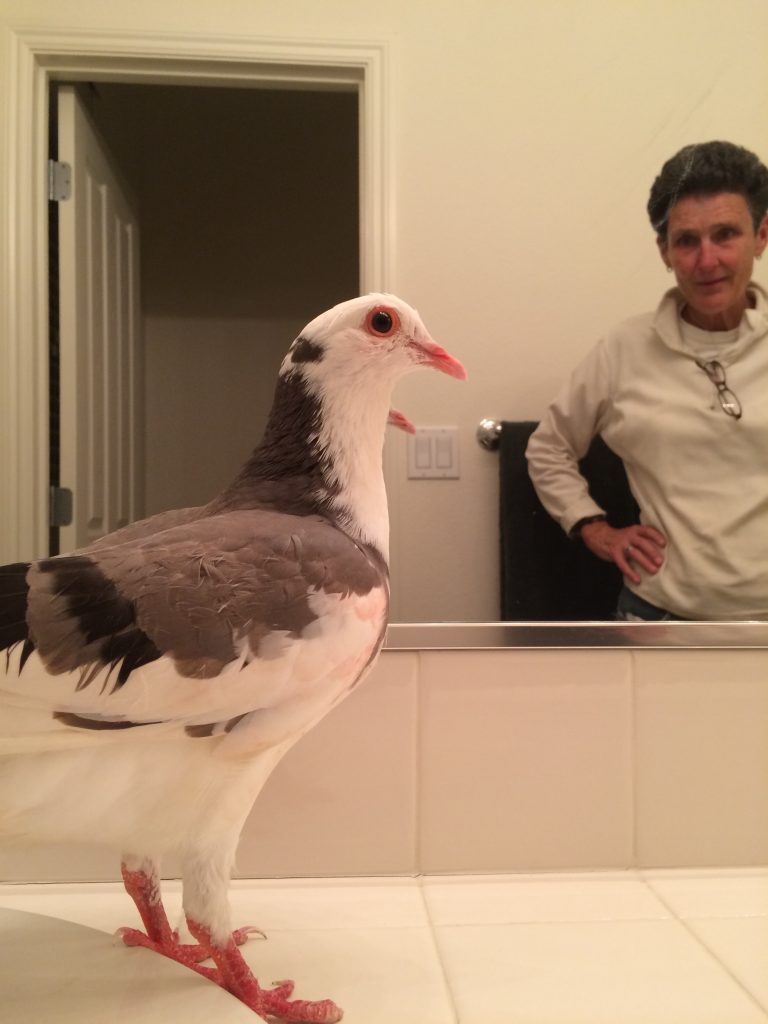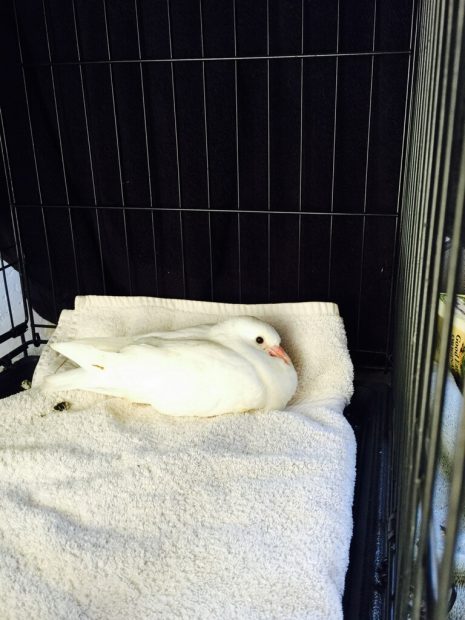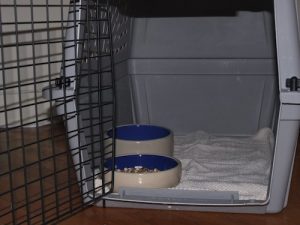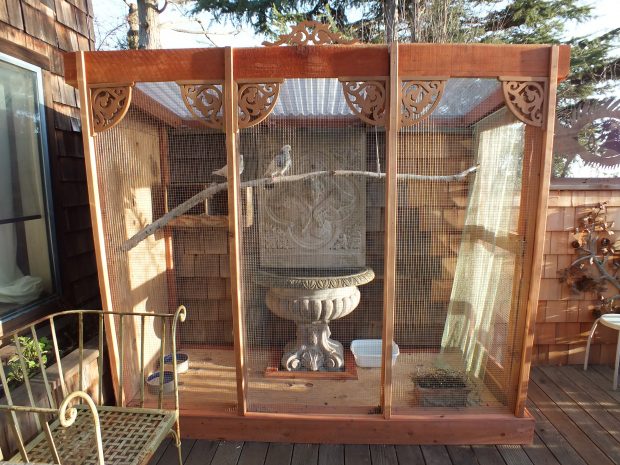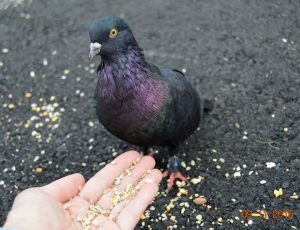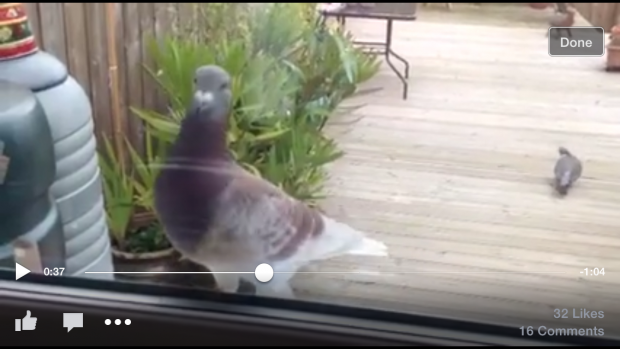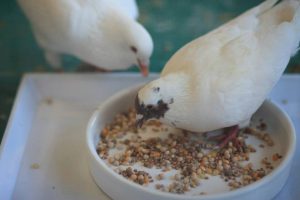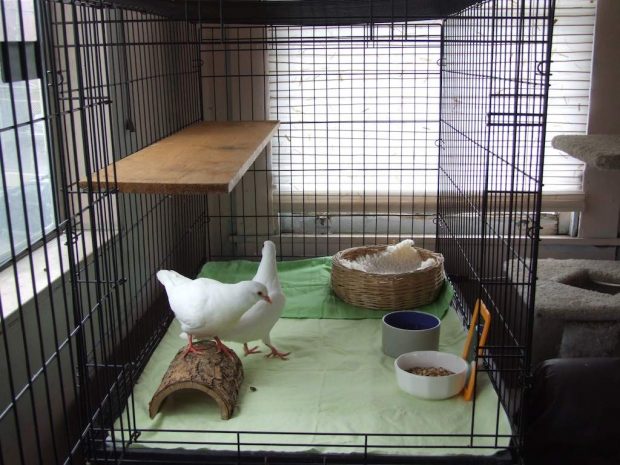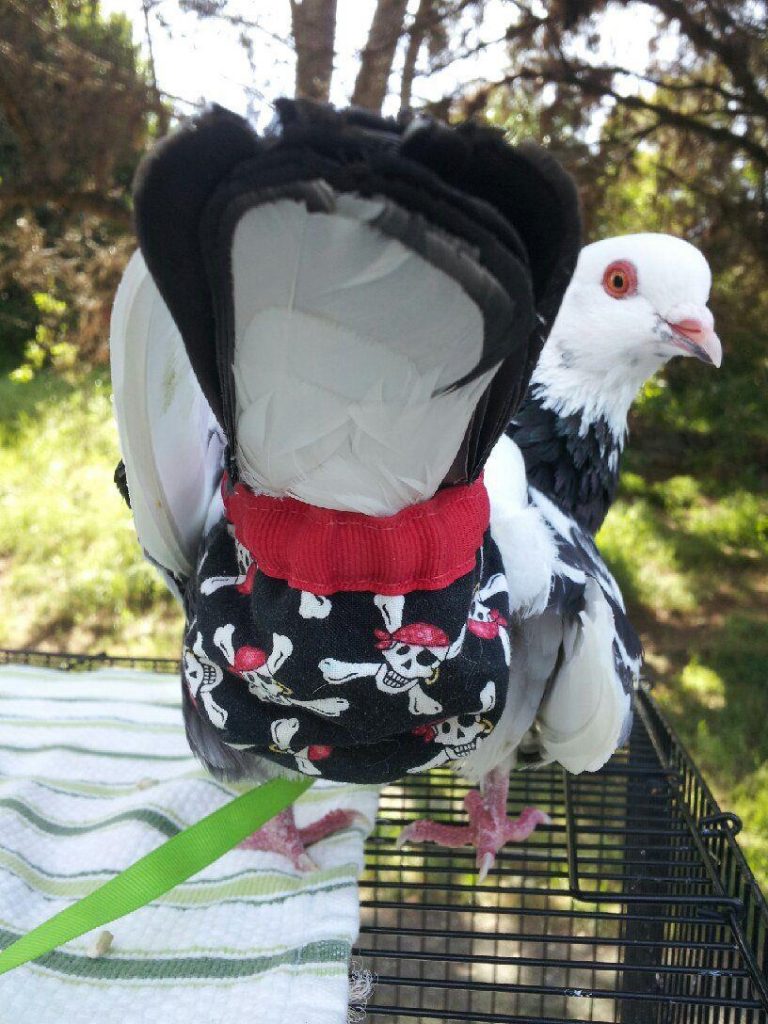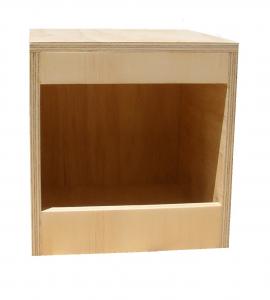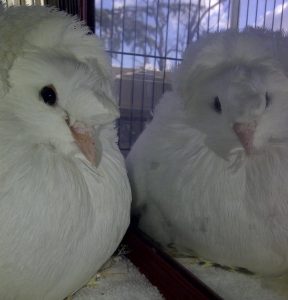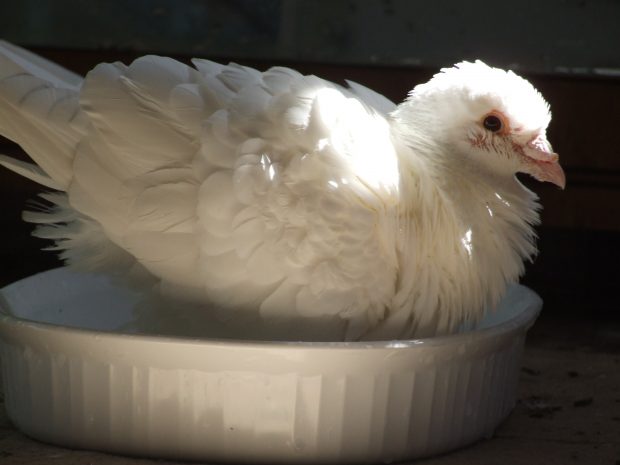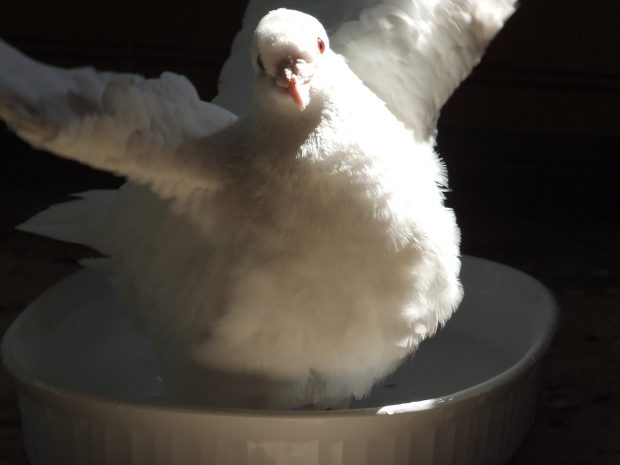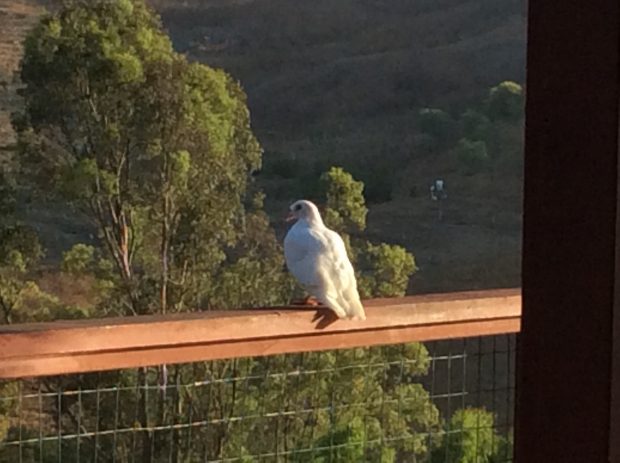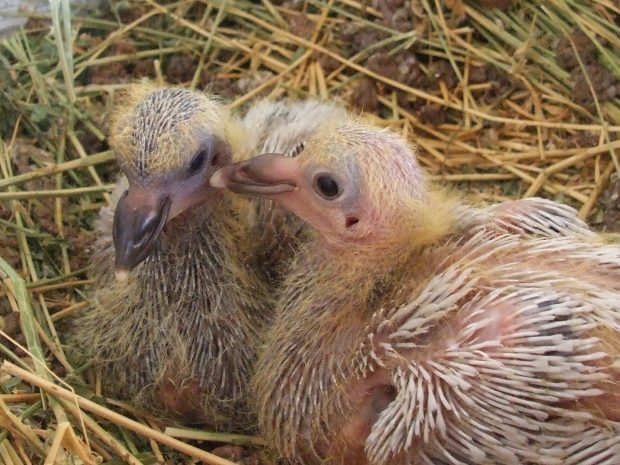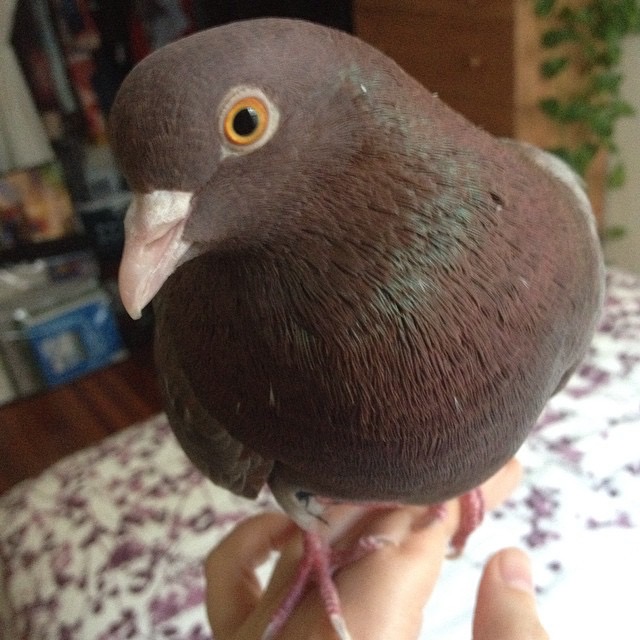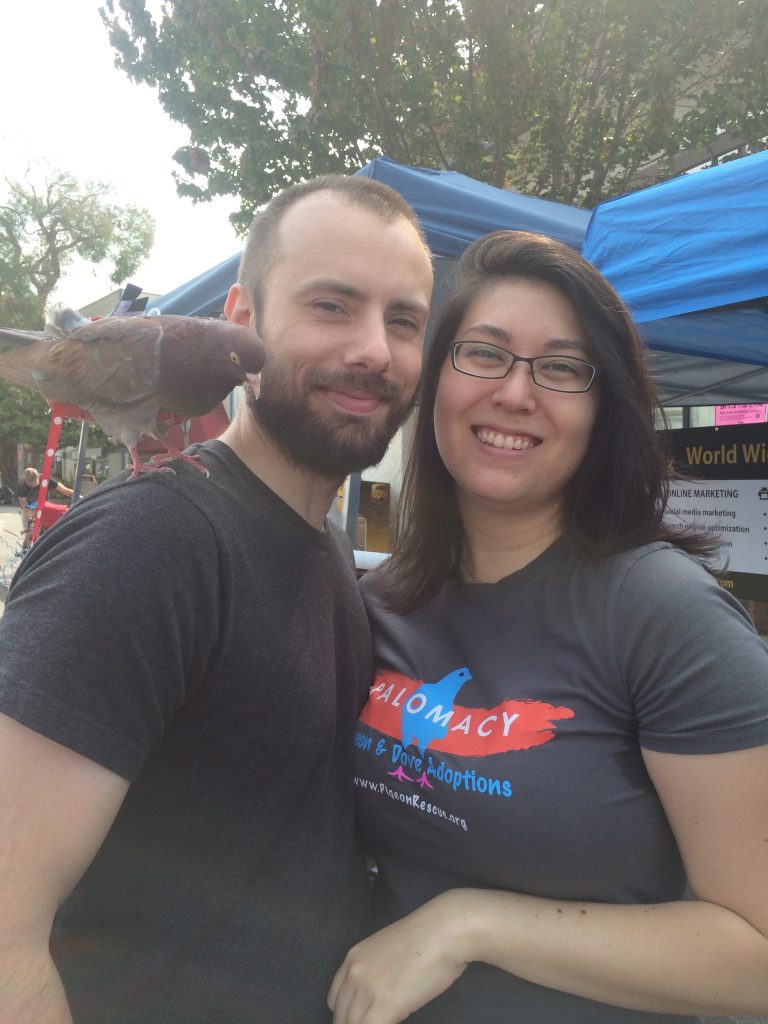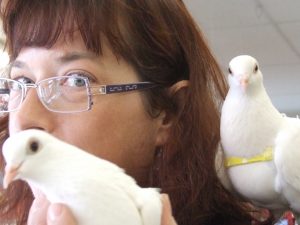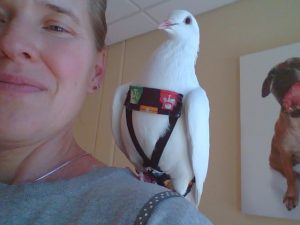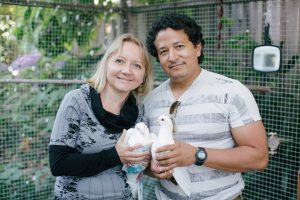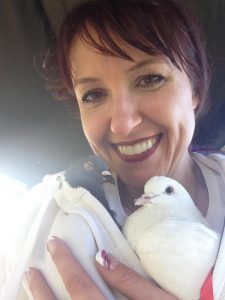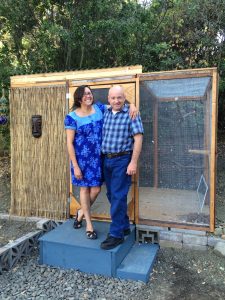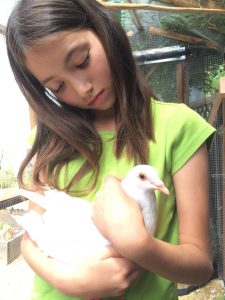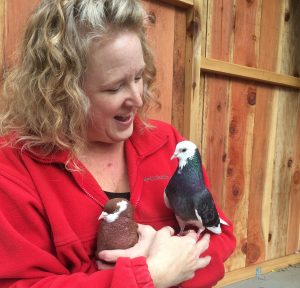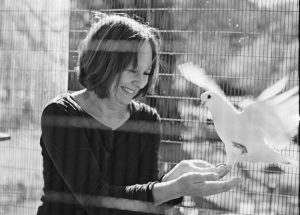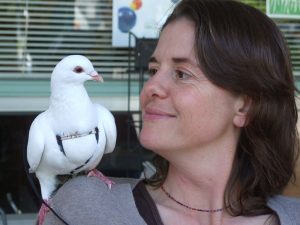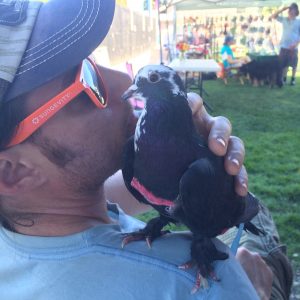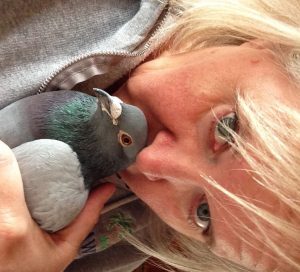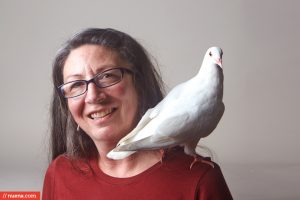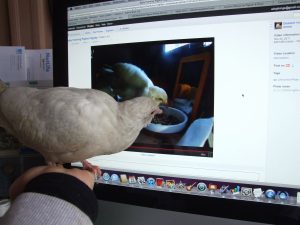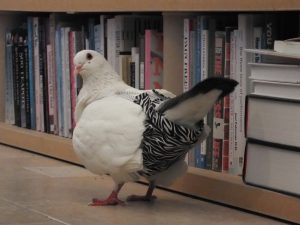How to Care for a Rescued Pet Pigeon (for Newbies)
If I had my way, there would be no pet pigeons, amazing as they are. They would all be wild and free. I don’t believe that birds should be domesticated, bred and used by people for any reason. But, because people do breed, use and lose unreleasable pigeons, there are a great many that are found lost, injured, starved or all of the above. I’m writing this for those birds and the compassionate people who help them.
Get Help from a Pigeon-friendly Expert
If a lone pigeon is hanging around, he is probably seeking help. A wounded, weak, fancy or endangered pigeon definitely needs help. (See how to catch a pigeon in need here.) Pigeons are easy to care for but my first bit of advice is to always connect with a pigeon-friendly expert to get help assessing the bird’s condition. (Join our Palomacy Help Group and post photos, questions and your location for fast help.) If you have rescued a juvenile Rock Pigeon (wild rather than domestic), he needs to get to a pigeon-friendly wildlife rescue! Don’t keep that wild child and make him a captive pet nor think you’re well suited to prepare him for release. You run a very high risk of ruining that baby’s chance to live as a free and wild pigeon (and there are already too few homes for unreleasable pigeons). You can find help by contacting wildlife rescues, avian vets or bird rescues. Ask if they are “pigeon friendly”. Some will be, some won’t (Rock Pigeons and domestic pigeons are non-native and unprotected so many institutions kill them as “nuisance animals” rather than help them). Here’s a map of just a few of the pigeon-friendly rescues in the US. (There are more out there, we’re just starting to populate this map). Too often, despite good intentions, pigeons that we are trying to help, suffer and die because their needs, injuries or illness went unrecognized, untreated or mistreated. You can find lots of great info and resources on Pigeon Talk and I highly recommend connecting with pigeon rescue groups on Facebook such as Pigeon & Dove Rescue International and ours- Palomacy Pigeon & Dove Adoptions. Post photos of the bird, your location and questions and you’ll get fast help. People often contact me saying, “I found a pigeon, she’s so tame and calm” and that tells me she is very likely weak, emaciated, injured or all of the above. Please- get the benefit of some expert guidance to help you help the pigeon!
If you’ve just found the bird and don’t know where to start, see What to Do if a Pigeon Needs Help. If you can catch easily the pigeon, it pretty much needs help of some sort.
Pigeons as Pets: Indoors or Outside?
Pigeons do great indoors as family pets. They can also live outside in a predator & rodent-proof aviary but I would never make a single pigeon live outside alone. They are flock birds and to be outside alone is stressful and lonesome for a pigeon. A single pigeon living indoors adopts the people as flock members. Please note, if your pigeon is going to be outside (even temporarily), she must be in a predator-proof cage. Most birds cages are designed only to keep birds confined indoors and they are not predator-proof outside. (To be predator-proof, the cage must be sturdily built, have very narrow spacing between bars and a raccoon-proof latch.) Please see How to Choose a Cage for Pigeons or Doves for detailed and important considerations regarding putting a bird in a cage and see How to Create an Aviary for Pigeons or Doves for the same regarding housing birds outside.
Caring for a Rescued Pigeon as a Pet In Your Home
Many domestic pigeons do what I call “self-rescue”. They have been dependent on people and often, when lost, injured or starving and in trouble, they approach people for help. Once you’ve gotten some expert help to determine your rescued bird’s medical needs, here is an introduction to the basics of what you need to know.
Pigeons eat seeds and grains and you can buy pre-mixed blends called pigeon feed at feed stores (and you can see our feeding recommendations here) but, until you can get that, you can feed them wild bird seed or dove & quail mix which are usually readily available at pet supply stores.
If your rescued pigeon isn’t eating, he’s either too weak, sick or injured or is, like the youngster in this video, too young to self-feed. (If your pigeon makes any kind of peep or squeak, it’s a juvenile.) Please get expert assistance ASAP in either case.
The bigger the cage the better and length or width are more important than height (pigeons don’t climb like parrots). We recommend a minimum cage size of 42″ wide, 27″ deep, 30″ high for one or two (compatible) pigeons. The cage needs to be up to the task of protecting the pigeon from the predators that have access to the cage. If you don’t have cats or dogs in the home wanting to reach in through the bars, wide spacing like that of dog crates is fine for pigeons. If you do, you’ll need a cage with narrow bar-spacing (.5″ max).
To be pigeon-friendly, the bottom should be covered with something flat and easy to clean such as wood, linoleum, plastic or a yoga mat cut to size. (Pigeons should never have to stand on a wire cage bottom. It is uncomfortable and unhealthy for their feet!) You can buy (or make) paper bird cage liners for easy clean up. You put a whole stack in the cage bottom and then take up the top one every day, leaving a clean cage liner right there where you need it.

Rescued King Pigeons Minnie & Mighty in a double-flight cage with paper cage liners for easy clean up
There is a lot of misinformation about pigeons and disease. They actually pose almost no risk to humans and you’re more likely to contract a zoonotic disease from dogs or cats than you are from pigeons. Pigeon poop is easy to clean up and apple cider vinegar works great. If you want to have your pigeon out and about in the house without pooping on stuff, you can put pigeon pants on them. (They’d rather go naked but they adjust really quickly. Pigeons are extremely adaptable and very good sports.)
The cage should include some shelves to offer destinations to fly or hop to and hang out on. (Perches are less useful for pigeons- all you can do on a perch is stand or sit. Shelves offer more options including strutting, courting, lounging, napping, etc.)

This parrot cage has been modified with shelves to provide more floor space and be more pigeon-friendly
Include a nice big mirror and a basket (weighted so as not to tip) or nest box. Use heavy, ceramic flat bottom, straight-sided crocks for food and water (I get them at thrift stores).
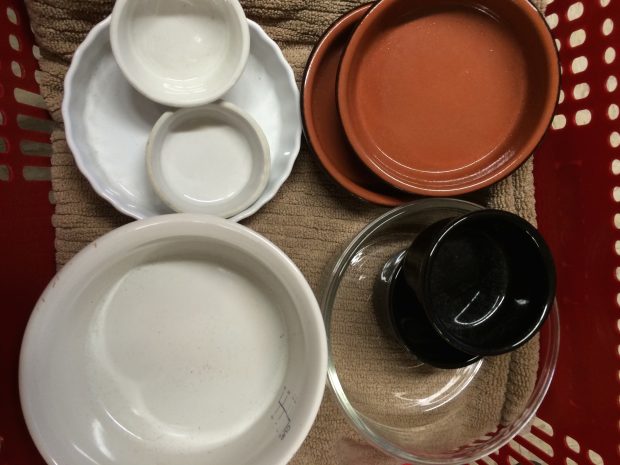
Flat-bottom, straight-sided ceramic dishes are best. Get a double set so it’s easy to replace used dishes with clean ones.
Provide a casserole dish or big plant saucer for a bath tub. Healthy pigeons are very fastidious about keeping their feathers clean. They love to bathe. I leave bath water out for my pigeons all the time so they can bathe whenever they feel like it. If your new pet pigeon hasn’t tried out his bath tub, he may not be feeling well and need some expert care. If your pigeon is healthy and hearty but still not bathing, you can inspire them to preen by misting the air above them (not directly at them). Being damp will trigger preening and should eventually lead to bathing.
Locate the cage in a well-lit area (they have poor vision in low light and even bright homes are dim compared to the outdoors). They’ll also need safe access to sunshine unfiltered by glass or avian-safe full spectrum lighting. Locate them where they can be near the family (for companionship, socializing and enrichment). Pigeons adapt quickly to living in human households- even with dogs and cats (as long as they are protected). Don’t worry about drafts- that’s a non-issue, the more fresh air, the better. Do study up though on true household hazards for pet birds such as using Teflon-coated pans, smoke, scented and aerosole products, open windows or doors, hot stoves, ceiling fans, etc. (See Top Ten Household Dangers to Pet Birds and Bird Proof Your Home, though they recommend clipping wings and we don’t. Please note: Clipped wings only prevent birds from flying while indoors. Clipped-wing birds can and do get airborne and lost outside all of the time!)
The biggest risk to a pet pigeon is getting outside and being killed by a predator before he can get back in to safety. Wild pigeons derive all their security from being part of a flock that stays alert watching out for predators and knows what to do (and has the education and physiology to do) what is needed when under attack. A pigeon alone is extremely vulnerable. A domestic pigeon outside alone is in imminent danger. It is unsafe to take a pet pigeon outside unprotected. They need to be in an aviary or in the house (or flying with a flock at the very least). (See Why Is It Too Dangerous for Pet Pigeons to Free Fly?)
Making Friends with a Rescued Pigeon
Pigeons are very intelligent, emotional and social. They are flock birds that hatch as twins and snuggle sweetly with their nest mate while being fed and cared for by both mom and dad until they fledge at about 5 weeks of age (or are “harvested” at 4 weeks if they were bred for meat as King Pigeons are). They want and need a special friend!
Once out of the nest, they are single for a brief couple of months and then court and marry a mate. Pigeons mate for life and are completely devoted to their mate and young. The thing pigeons care about most is their family and being home with their family. (That’s how pigeons are used to deliver messages or for “dove releases” or racing. They are taken away from home and then they fly their hearts out to try and get back. You can learn more about the cruel sport I call “kidnap racing” and see some rescue stories of racing pigeons here.) If a pigeon can’t get home to his family (or his home isn’t a safe place to return to), he needs a new family. Pigeons are very emotionally intelligent and though it takes time and patience, you can earn their trust and they can become very closely bonded to you.
It takes time and patience to win the trust of a pigeon. The more time you spend with him, the more he gets to see you and interact with you, the more your friendship will develop. If your rescued pigeon is really shy, sit down (standing can be menacing) and put your hands behind you (hands are threatening) and speak softly. You can coo to him or just sweet talk him. They are super smart and learn quickly. Pigeons need and want a BFF. If you have the time to be that for your pigeon, he can be very happy. If not, he’ll need a compatible companion. You can learn more about having a mated pair of pigeons here: Pigeon Family Values. (If you’re wondering about egg-laying, that article has info for you too.)
Of course- there’s lots, lots more to learn about pigeons and what amazing pets they can be. Keep reading and join us at our page on Facebook. Thank you for being a friend to pigeons. They are angels among us.
- Cheryl with Mandee & Binky
- Liese & Peanut
- Natalia & Jorge with Elsa & Snezhok
- Christiana, Coo Jackman & Talma
- Roxanne & Jeff’s aviary
- Mia & Donut
- Kristi, Pico & Olaf
- Jill & Georgie
- Yuzu & Shae
- Jean Paul & Johnny Drama
- Adina & Bubba
- Dmitry & Mr. Stinker
- Elizabeth & Dylan
- Gypsy & digital Gypsy
- Roberta in zebra pants

